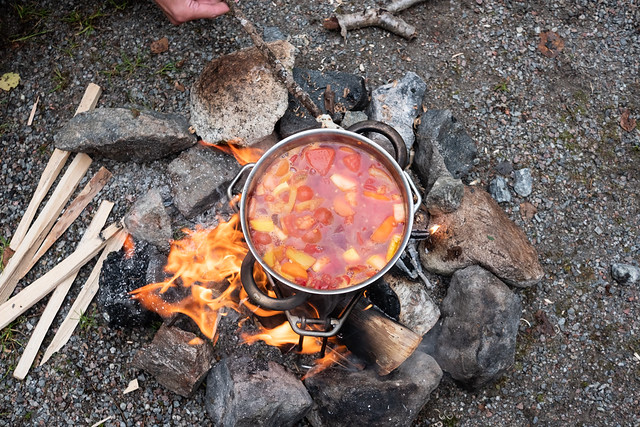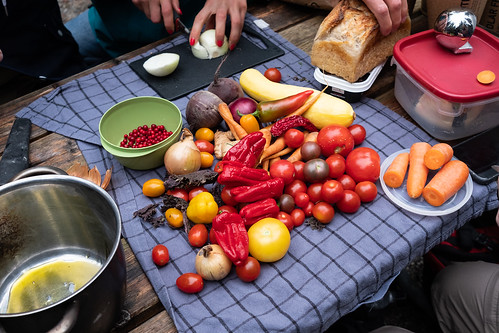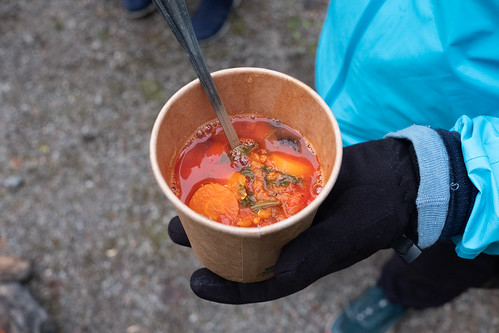Our Friends The Pollinators (Våra vänner pollinatörerna) is a workshop and pedagogical activity that has been recurring in various forms over the past ten years.

[Våra vänner pollinatörerna, Hästa gård 2012]
The idea when the workshop was first done was to expand from work engaging with honey bees and their troubles, to include solitary bees which, as species, actually are more threatened. The idea was also to make a fun and educational activity for both kids and adults that can inspire environmentally positive activities and develop practical skills. Since then the workshop has happened a number of times in various contexts, from being a “summer job” activity with youths, to a short course with university students in architecture and design, and as part of programmes connected to exhibitions in art spaces.

[Våra vänner pollinatörerna, Lötsjön 2018]
During the years the workshop has evolved to be more pedagogical for people of all ages and more manageable for the facilitator. Since building nests for solitary bees has become a quite popular activity and is promoted by many environmental organizations, I’d like to share some experiences that may be useful for others who do workshops in building nests for solitary bees.
This is not intended as in-depth workshop instructions but are hopefully some useful takeaways:
- Reed is a great material to use for making nests for solitary bees. Reed can be cut with regular scissors so that one end of the piece is plugged by a “node” and the other end is open. This is perfect for solitary bees because some species need holes that are at least ten centimeters in depth to lay eggs that produce both male and female bees, and the bees prefer holes they can’t see through. A bundle of ten such reed straws is great because it gives a female solitary bee plenty of space to lay her eggs in during the summer. Reed is also easy to collect, where it grows there usually grows a lot.
- A large bundle of reeds can also be used as a prop to “set the stage” for the workshop. Arranging various workshop materials in a fun way draws participants into the workshop and makes for nice documentation pictures which can further inspire people.
- The reed can be bundled together with string. You can also roll the reed in f.ex wellpapp or birch bark if you want to add more “work” to the workshop. Wellpapp is easy to work with even for kids and can be painted on. Birch bark needs to be cut with secateurs or knife, so it’s more for youths and adults, but working with birch bark is a fun sloyd activity.
- Painting the nest with finger paint is probably of no use to the bees, but it could theoretically help them find their nest faster, and painting the nest it’s often the most fun part for people. If the finger paint is nontoxic then it doesn’t harm the bees or people. But toxic paints should be avoided.
- Deep holes drilled in wood are great for bees to live in, but it requires long wood drills, which can be difficult to find. And power tools require very careful attention and guidance if kids are involved. However, giving youths freedom to use power tools can be very exciting and engaging for them.
- Making a nest for bees can be a great exercise in balancing aesthetics (from a human perspective) and function (from the bees’ perspective). A nest that looks appealing to humans might not be at all functional for bees.
- Making nests for solitary bees works. Chances that bees inhabit them are quite high. But it’s important to place nests properly. This means placing them in a warm and sunny spot, in a secure way so they don’t blow away, and preferably not easily accessible for birds who may pick the nest apart and eat bee larvae. If the nests have been made with well papp and / or painted with water based paint they also need to be sheltered from rain. Chances that bees find them increase if there are flowering plants nearby.
- In the spring female solitary bees start to look for hollow plant stems and holes made by other insects in wood to lay their eggs in, and they work all summer laying eggs in the holes they find. Solitary bees develop from eggs, to larvae, to pupae, to bees, during autumn to spring. So the nests need to be put out in the spring / early summer and stay in the same location until at least the next spring. It’s less abstract for the participants if they are shown some illustrations or photos of how for example mason bees and leaf cutter bees nest, their life cycles and how the bees look.
- Avoid using non biodegradable materials such as plastic that may become litter that is harmful for the environment. And avoid using toxic paints that may be harmful for bees and people.
- Making nests for solitary bees likely does not make any difference for bees on a species level. It’s an activity which, if done well is educational and helps a few bees. However, if the wrong materials are used it could actually be counterproductive from an environmental perspective.
- Many “bee hotels” for solitary bees that can be purchased are designed wrongly, with f.ex. not deep enough holes or too wide hole diameters, and many are “made in china” and imported. They are more examples of the problems than solutions.
- What actually matters to bees are things such as less monocultures and less use of pesticides in agriculture, more meadows, and more and wilder parks and gardens.
- Kids need to learn by playing and having fun, and not be put off by all the troubles of the world. But if the point of the workshop is to do something that makes a difference for bees then youths and adults ought to be informed about what the actual troubles and solutions are. To avoid disappointment it’s also important to share that there is no guarantee that a nest for bees will be inhabited. If the nest isn’t inhabited or if the nest breaks or is damaged then it can still be an experience to learn from.







